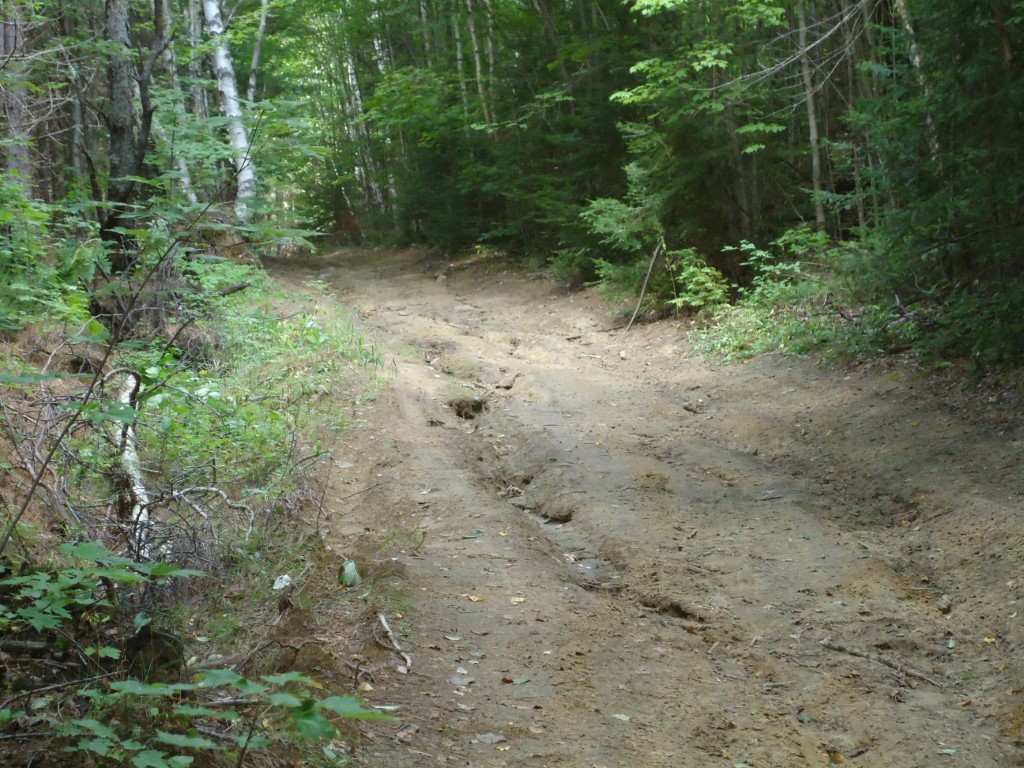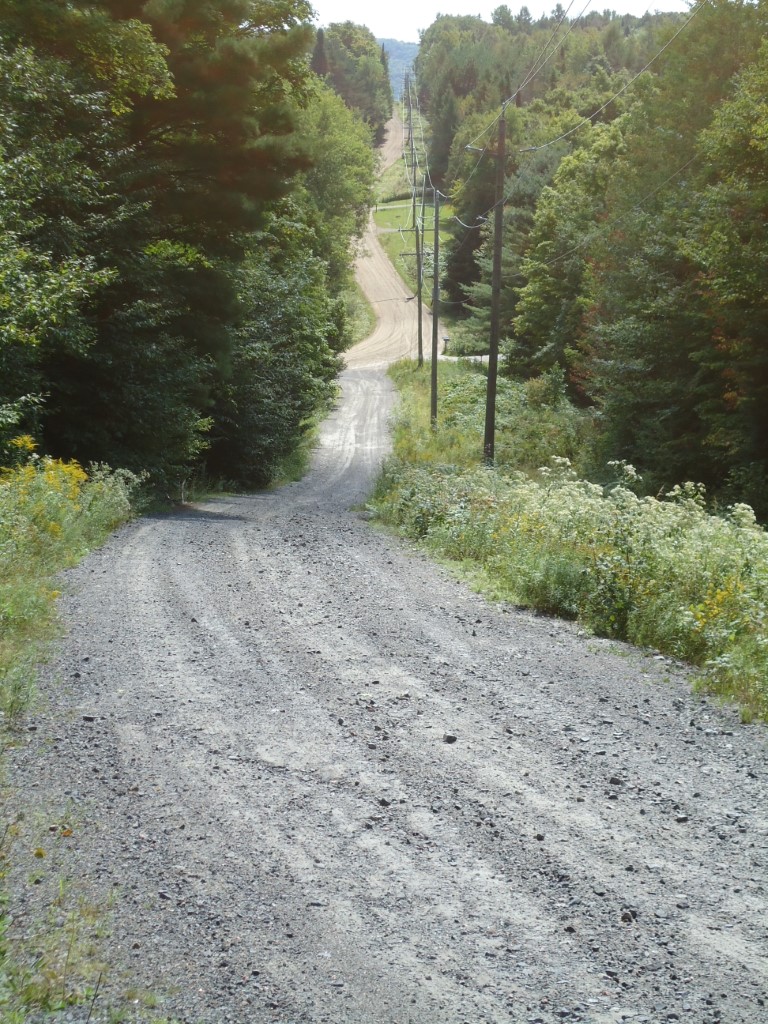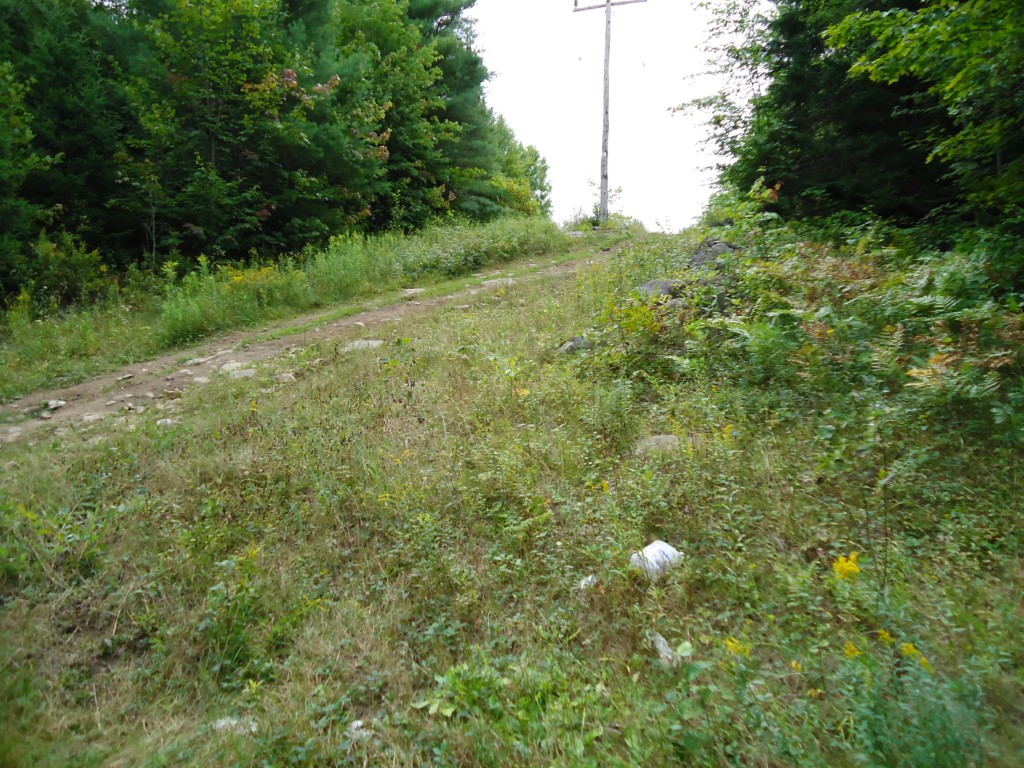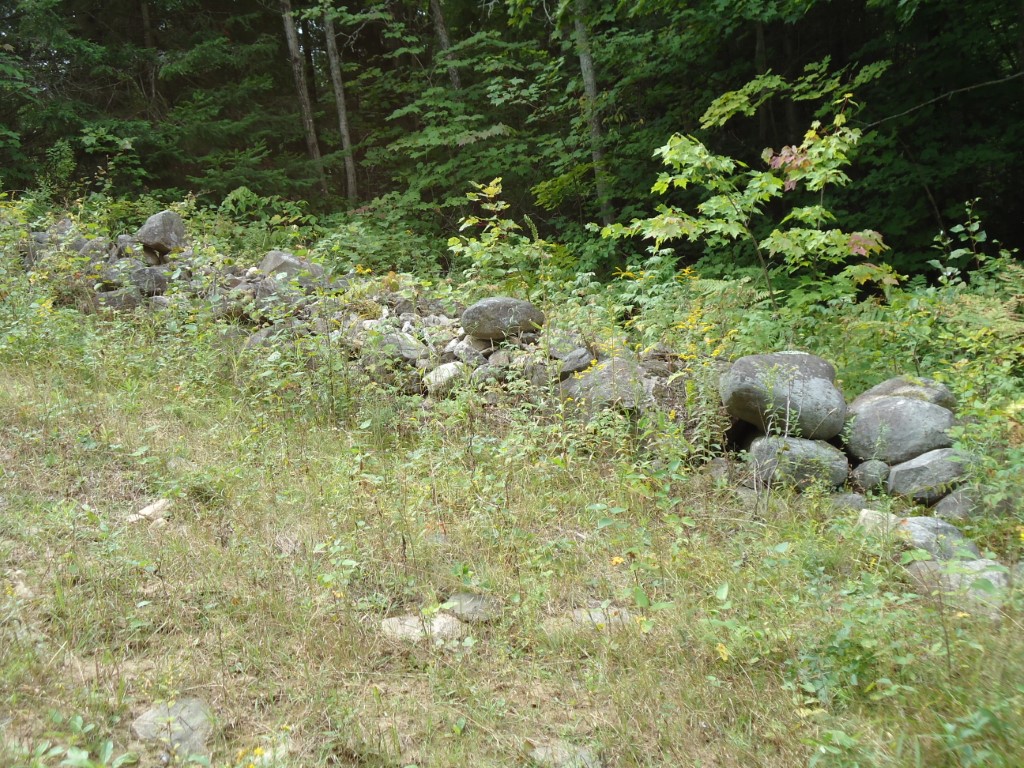It’s one thing to drive along part of Highway 11 and know you’re following the same route as the original Muskoka Colonization Road. It’s quite another to walk along part of the original road that still looks like it did 150 years ago.
This is the Muskoka Road as it looked back in the 1800s: a dirt pathway that gambols up and down and around and through some of the roughest territory in Muskoka-Parry Sound. This is the actual road just north of Huntsville:

Complete with ruts, minus the tree stumps, and maybe four feet narrower than in the 19th century, stretches of the original road can still be travelled, if not by car, then by foot or mountain bike. Picture yourself clinging to the side of the stagecoach along this stretch just north of the Big East River:

Remember that the road was maintained by the adjoining settlers under statute labour laws, which required every man over the age of 18 to provide two days of road work per year. But every man over the age of 18 was too busy trying to hack a farm out of his “free grant land” to do much road maintenance. Here’s part of James Matice’s 100 acres, which rises up along the east side of the Muskoka Road at the very north end of Chaffey Township:

In 1879, Matice and his wife Mary lived with their eight children in a shanty or log house right beside the road near this stone fence:

A little over a decade later the 1891 census shows no trace of the Matice family anywhere in Canada. I wonder why. Or is it obvious from the look of their land?
I plan to walk more sections of the original road – as much as is possible all the way to North Bay. But my adventure doesn’t begin to match that of the surveyors, settlers and entrepreneurs who made their way along this exact route 150 years ago.
Kind of reminds me of the roads in Pompeii where there are actual ruts in the stones. Must be eerie seeing it in person.
It wasn’t eerie so much as a very strong sense of connection. I’ve pictured the road in my mind for over a year as I’ve been writing and researching, and here it is, exactly as I had imagined! I could really see those stagecoaches and wagons stuck in the mud or bouncing over the ruts and the weary faces of the settlers trudging along. I could hear the shouts of the surveyors as they stretched out their chains… It was a fabulous experience – can’t wait to get back and do more!
Very cool
That is amazing! It really makes the whole story come alive. I now have so much more sympathy for Harriet King. Are you planning on using these in the book? They’re great photos!
Yes, I’m planning to include these and more like them! And you are about to meet – in Chapter 6 – Ada Florence KInton, who travelled this exact stretch of the road! Another bruised stagecoach rider…
Those are great photos!